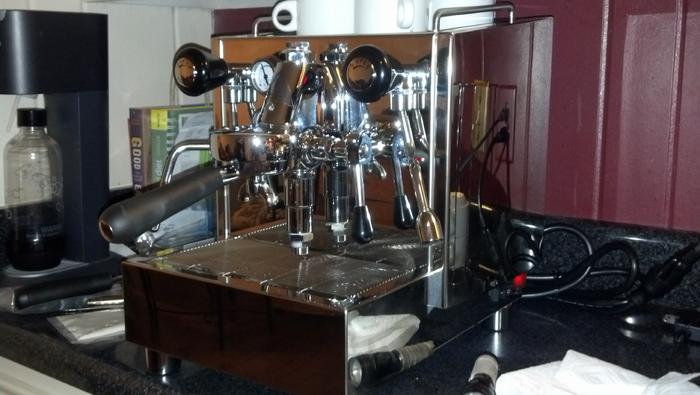Results 11 to 20 of 53
Thread: Espresso Machine
Hybrid View
-
03-02-2008, 07:13 AM #1

The Espresso Expenditure Saliva Test:
Go to: http://espressoporn.blogspot.com/
Your espresso kit budget should be directly proportional to the amount of drool now pooling in your keyboard.
-
03-02-2008, 11:05 AM #2Senior Member

- Join Date
- Jan 2008
- Posts
- 396
Thanked: 4
Despite the possibility of spending amazing amounts of cash on your home setup it is possible to be quite happy with a fairly simple burr grinder and steam machine if all you want is espresso or americanos.
I have dreams of a silvia grinder and a manual press with an eagle on top but in terms of taste I would say the move from a chopper to a burr grinder was likely the biggest improvement in my home setup.
My cheapo steam machine makes an americano that is just as good as charbucks in flavour.
If you are hoping to win a barista competition and sign your initials with the crema ignore this message in its entirety.
-Bob
-
03-02-2008, 12:29 PM #3

Don,
I've had a capresso for five years. It make great coffee. I think it was about three hundredd when I bought it. I'll buy another when this craps out.
Martin
-
03-02-2008, 03:40 PM #4

I'll vote Quickmill Anita, my wife and I love it
 Easy to use and make a great shot.
Easy to use and make a great shot.

Last edited by Padron; 03-02-2008 at 03:46 PM.
-
03-03-2008, 03:30 AM #5Previously lost, now "Pasturized"


- Join Date
- Oct 2005
- Location
- Winnipeg Manitoba Canada
- Posts
- 1,333
Thanked: 351
Hey.... nobody warned me about Coffee Porn! No fair!
-
03-03-2008, 05:35 AM #6
-
03-08-2014, 02:58 AM #7
 new espresso machine
new espresso machine
my new espresso machine just arrived in the mail today and I had to show it off

-
03-08-2014, 03:01 AM #8

Wow - that's an industrial coffee maker!!
-
03-08-2014, 03:02 AM #9

I do love my coffee, my only problem now is that my current grinder can't keep up with it lol
-
03-08-2014, 03:23 AM #10Senior Member


- Join Date
- Jan 2011
- Location
- Roseville,Kali
- Posts
- 10,432
Thanked: 2027
Neat machine
 ))))
CAUTION
))))
CAUTION
Dangerous within 1 Mile


 13Likes
13Likes LinkBack URL
LinkBack URL About LinkBacks
About LinkBacks






 Reply With Quote
Reply With Quote



